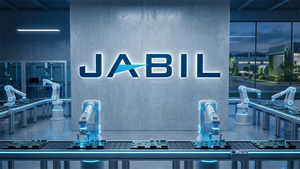
While the S&P 500 (^GSPC) includes industry leaders, not every stock in the index is a winner. Some companies are past their prime, weighed down by poor execution, weak financials, or structural headwinds.
Some large-cap stocks are past their peak, and StockStory is here to help you separate the winners from the laggards. That said, here are three S&P 500 stocks to steer clear of and a few alternatives to consider.
Jabil (JBL)
Market Cap: $22.52 billion
With manufacturing facilities spanning the globe from China to Mexico to the United States, Jabil (NYSE: JBL) provides electronics design, manufacturing, and supply chain solutions to companies across various industries, from healthcare to automotive to cloud computing.
Why Are We Hesitant About JBL?
- Customers postponed purchases of its products and services this cycle as its revenue declined by 10.1% annually over the last two years
- Earnings growth underperformed the sector average over the last two years as its EPS grew by just 1.6% annually
- Poor free cash flow margin of 3.1% for the last five years limits its freedom to invest in growth initiatives, execute share buybacks, or pay dividends
Jabil’s stock price of $208.02 implies a valuation ratio of 20.8x forward P/E. If you’re considering JBL for your portfolio, see our FREE research report to learn more.
Intercontinental Exchange (ICE)
Market Cap: $101.4 billion
Starting as an energy trading platform in 2000 before acquiring the iconic New York Stock Exchange in 2013, Intercontinental Exchange (NYSE: ICE) operates global financial exchanges, clearing houses, and provides data services and mortgage technology solutions to financial institutions and corporations.
Why Does ICE Worry Us?
- Incremental sales over the last five years were less profitable as its 8.6% annual earnings per share growth lagged its revenue gains
At $177.14 per share, Intercontinental Exchange trades at 24.3x forward P/E. Read our free research report to see why you should think twice about including ICE in your portfolio.
Truist Financial (TFC)
Market Cap: $60.33 billion
Born from the 2019 merger of BB&T and SunTrust in one of the largest banking combinations since the 2008 financial crisis, Truist Financial (NYSE: TFC) is a bank holding company that offers a wide range of financial services including consumer and commercial banking, wealth management, insurance, and lending solutions.
Why Is TFC Not Exciting?
- Net interest income stagnated over the last five years and signal the need for new growth strategies
- Net interest margin of 3% is well below other banks, signaling its loans aren’t very profitable
- Performance over the past five years shows its incremental sales were much less profitable, as its earnings per share fell by 1.2% annually
Truist Financial is trading at $46.79 per share, or 1x forward P/B. Dive into our free research report to see why there are better opportunities than TFC.
High-Quality Stocks for All Market Conditions
Trump’s April 2025 tariff bombshell triggered a massive market selloff, but stocks have since staged an impressive recovery, leaving those who panic sold on the sidelines.
Take advantage of the rebound by checking out our Top 6 Stocks for this week. This is a curated list of our High Quality stocks that have generated a market-beating return of 183% over the last five years (as of March 31st 2025).
Stocks that made our list in 2020 include now familiar names such as Nvidia (+1,545% between March 2020 and March 2025) as well as under-the-radar businesses like the once-micro-cap company Tecnoglass (+1,754% five-year return). Find your next big winner with StockStory today for free. Find your next big winner with StockStory today. Find your next big winner with StockStory today
StockStory is growing and hiring equity analyst and marketing roles. Are you a 0 to 1 builder passionate about the markets and AI? See the open roles here.





